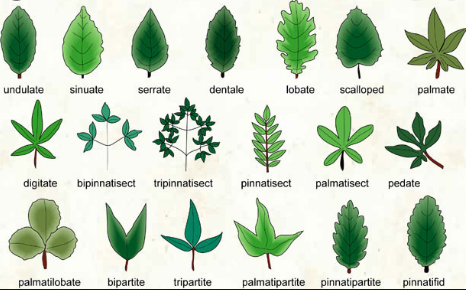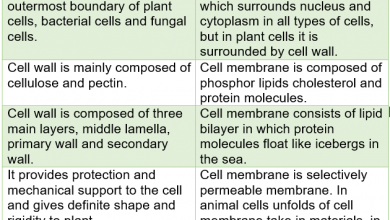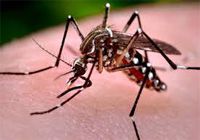Types of Leaves
Types of Leaves: As Leaves are one of the most visible and recognizable parts of plants and are actually one of the most important as well. These are responsible for capturing sunlight and photosynthesis that gives energy to the plant, as well as plant respiration also occurs in them.
so, before going to discuss types of leaves in detail, let’s know about what is a leave?
The leaf is defined as an organ of the plant, which usually emerges from the sides of the branches and stems. It has a laminar shape and is usually green in color. Its main function is photosynthesis.
Due to the great importance that they have in most plants, there is a huge variety of types of leaves and characteristics. Therefore, there are also many different ways to classify them. If you want to learn more about the types of leaves and their different classifications.
The types of leaves can be divided into six major types and the most common types are:
Conifer Leaf
The leaves of conifers are shaped like needles and scorpions. The leaves of conifers generally grow well and adapt well to colder climates, designed to disperse snow and withstand low temperatures. Douglas is an example of firs and spruce trees. The following image shows this type of sheet.
Sheath Leaf
Vaginal leaves are common to both grass species and moths. As you can see, the leaves are long and narrow, wrapping around the roots at the roots. Also, the structure of blood vessels is restricted, and one sheet contains only one sheet. The following image shows an example shell.
Microphyll Leaf
Microphyll leaves are distinguished by an uninterrupted pathway. Although this type of leaf is widely used in fossil records, few plants today offer this type of leaf. Some examples include horses and foot horses. The following image shows this type of sheet.
Fronds
The Fronds leaves are large and thin, usually palm and palm. branches can be separated or split into blades. The image below shows an example of a Frond tree.
Megaphyll Leaf
Megaphyll leaves are characterized by a large number of blood vessels that can cross strongly. The leaves of megaphyll are wide and flat and generally from the leaves of most plant species. The following image shows this type of sheet.
Angiosperm Leaf
Vascular sperm or Angiosperm leaves are found in flowering plants. These leaves are distinguished by their stems, tongue, and petrol. The image below shows an example of a vascular sperm leaf.
Parts of the leaves
- The sheath: it is the slightly wide portion of the leaf that usually hugs the stem.
- The petiole: which is the stem that joins the blade and the sheath.
- The limbus: is the laminar part, which has two faces: the upper face and the lower face. This has three regions: edges, base, and tips.
The term leaf is also often used when distinguishing the petals that form a flower.
In the commercial field. The word leaf comes from the Latin folium, which is why each written sheet of paper is called a folio, which is also known as a leaf. A sheet is a material used for drawing, writing, and counting.
These can be joined by staples, glue, or by any other means forming folders, notebooks, or books, or they can be loose. They can be squared, lined, smooth, on cardboard, or thin sheets.
Types of leaves according to the petiole
The petiole is the part of the leaf that connects the blade, which is the wide part that we tend to recognize as the leaf itself, and the stem or branch. Thus, the leaves can be classified according to the petiole in this way:
- The petiolate leaves have a petiole that connects the blade to the plant. This petiole can have very different sizes depending on the specific characteristics of each plant.
- The sessile or seated leaves, on the other hand, do not have a petiole. In these cases, the blade arises directly from the stem or branch.
However, not all plants have to be exclusively petiolate or sessile leaves: there are some that have left of both types, depending on whether they are leaves on the stem or at the base.
Types of Leaves according to their location on the stem
Whorled leaves
They are those that form a ring around the edge of the stem and develop in groups.
Opposite leaves
These leaves tend to grow in the opposite way and united by the stem, creating a kind of knot. One is shown on each side.
Alternate leaves
These leaves usually grow one by one creating knots, displaying one next to the other in relation to the stem. The same ones are always kept in alternation.
Basal leaves
Refers to leaves that only grow near the base of the plant, and sometimes come into contact with the ground.
Connate leaves
They are two leaves that grow side by side and in opposite ways, but they do not have a petiole.
Types of leaves according to the division of the blade
As we explained above, the blade is the most recognizable part of what we usually call the leaf, the broad and generally smooth area. The way the blade divides or not is another type of classification of the leaves.
- Simple leaves have a blade that is either not split at all, or it is, but its divisions do not reach the main vein.
- The divided or compound leaves, on the other hand, show a blade that divides completely up to the main vein, giving the sensation of several blades joined by a single petiole.
Simple leaf types
- Acicular: it is thin, long, and pointed.
- Elliptical: also known as an oval. It is wide in the center and tapers at the ends.
- Cordiform: heart-shaped, the base being its widest part.
- Ensiform: presents the shape very similar to a sword.
- Spatulate: shaped like a spoon or spatula.
- Hastada: shaped like a halberd.
- Falcada: with a curved and flattened shape.
- Lancolada: its shape is a spear.
- Linear: it is long, narrow, and with more or less parallel edges.
Types of leaves according to their shape
Actually, the most correct thing is to say that we classify them according to the morphology or shape of the blade, and not the leaf itself. It is one of the most visual and easy to identify classifications. The types of leaves according to the shape of the blade are the following:
- Elliptical sheet: as the name indicates, they are those whose shape traces an ellipsis, that is, an elongated or deformed circumference.
- The lanceolate leaf is those whose blade shows a characteristic shape of a spearhead or simple arrowhead, with a wider base and a narrow and sharp point.
- Acicular leaf: the typical needles of most conifers, such as pine, are easy to recognize examples of this morphology.
- Oval blades: they are similar to ellipticals but somewhat wider at the base and with a sharper point.
- Heart-shaped blade: similar to the way we usually represent hearts.
- Sagittate blade: this characteristic shape resembles the point of a halberd or a divided arrow, with a central point and two others open to the sides.
- Linear leaf: These leaves look like ribbons, with straight, regular edges that extend. They tend to be narrow and long.
Types of leaves according to their base
Sharp
Leaves with an acute angle.
Roped
Refers to leaves that have a heart shape at their base.
Dimmed
They are the leaves that when they reach their base begin to narrow.
Auricular
As its name indicates, they are the leaves that have auricles at their base.
Truncated
Leaves with a base that presents a transverse border.
Cuneada
These at the base are shaped like a wedge, with converging and straight edges.
Rounded
It has a semicircular base.
Oblique
They are distinguished because their edges do not maintain the same point on the petiole.
Types of leaves according to their edge
In addition to the previous classification, the shape that the edge of the leaf blade adopts can also be differentiated. Thus, the types of leaves according to the edge of these are:
- The whole leaf: also called smooth leaves, the edge of whose blade extends in an uninterrupted line and in a straight way or with a constant curve.
- Toothed blade: in these leaves, the blade takes the shape of saw teeth, which can be of very different sizes depending on the specific shape of each species.
- Lobed leaf: these leaves create very marked irregularities in their contour, with projections and recesses of pronounced curved shapes.
- Wavy leaves: they present curvatures in their contour, but in a smoother and less pronounced way than in lobed ones, without actually forming “arms”.
Types of leaves according to the shape of their margin
Serrated blades
They are the leaves that show a pointed margin, simulating teeth.
Lobed leaves
Refers to leaves that have wavy recesses and projections.
Whole leaves
These are the leaves that have a smoothed margin.
Wavy leaves
Type of sheet that has margins with not very marked recesses.
Sawn sheets
In these leaves, their margins have a pointed, sloping, and small shape.
Types of leaves according to their veins
Three main types of leaves can be found according to their veins, differentiated in this way:
- Penninervia leaf: they are the leaves that have a main vein, from which all the secondary veins start. It is the typical form adopted by most of the leaves that are represented.
- Palminervia leaf: its name comes from the palm of the hand due to its similarity to it. From a central point, the different nerves come out as if they were the fingers of the hand.
- Leaf parallel line via its ribs extends close to parallelism throughout the entire leaf.
Palminervia leaves
These have branched petioles on different veins.
Penninervia leaves
They are the leaves that have a central vein, from which the rest of the nerves are usually born.
Webbed leaves
They are the leaves that usually contain two or more main nerves, which branch into other nerves, thus acquiring an appearance very similar to the fingers of the hand.
Leaves parallelinervia
These are the leaves where the petiole is the starting point of the nerves, which become parallel to each other.
FAQ’s (Frequently Asked Questions)
What are the different types of leaves?
basically, there are two types of leaves i.e., compound and simple leaves. both types are further divided into centric cordate, acicular, oblique, lanceolate, orbicular, elliptical, linear, etc.
What are the 3 types of leaves?
the types of leaves are basically two but their arrangement is divided into three types in most of the trees and shrubs which are as follows: opposite, alternate, and whorled.
What are the different types of leaves?
they are basically compound leaves and simple leaves. the further types oriented from the basic two are acicular, lanceolate linear, centric cordate, oblique, orbicular, elliptical, etc.
What are the two main types of leaves?
They are as follows: (1) simple leaves (2) Compound Leaves
What are 2 examples of modified leaves?
Two examples are:
- Pitcher plant: genus Sarracenia is a modified leaf of The pitcher-shaped leaf.
- Tendrils: they can have both modified stem and modified leaf.
Which is the biggest leaf?
Raphia regalis is a plant that has the biggest leaves in the world. it belongs to the palm tree family Arecaceae. a species of Raffia Palm.
Which is the smallest leaf?
Wolffia is the smallest leaf that belongs to flowering plants. it is the part of genus nine to 11 species watermeal or duckweed plants are the examples of smallest leaf plants.
What is the other name of leaves?
leaf can also be known as Frond, Pad, Blade, Bract, etc.
What does a whorled leaf look like?
when three or more leaves paced on equal spaces on the node of the plant, they are known as whorled leaves. they can also be present as a set of five leaves.
What is simple leaf?
a leaf whose blade is not divided to the midrib even though lobed is known as a simple leaf.
You May Also Like:




